|
PROGRESS UPDATE
After spending most of the holiday season and my two week break disgustingly sick, I dove right into an editing project in January 2023 that wrapped up at the end of the month. It was a fun, cyberpunk sci-fi romp. However, that left me little time to do any official writing and what I did accomplish? Not that great. I mean, it wasn't bad! Just, wasn't super inspiring for me and when I signed off to shift my focus to other projects, I left a note in the margins that was essentially "trash this scene." IF YOU WANT TO HELP YOURSELF... Help someone else. There's a saying that goes like that. Whether or not I truly helped anyone else, is up to them to disclose. On my end, I definitely put in the work, and I think my own writing has ended up better for it. When I finally came back around to working on Nowhere Man, I realized that the one fatal error that was blocking me from making much forward progress---I'd borked the timeline. This is a thing that happens with me... the closer I get to the ending the more I rush things. However, after a refresh reread at the beginning of this month, I realized that I'd ACTUALLY messed up and added a few extra days to a seven day week and since I really needed some of the bigger set pieces to take place over a weekend, I'd have to stretch out the current run from one week to two weeks. And once I did some mental refiguring about how that would look, what would happen, etc.---everything just magically fell into place. IN TERMS OF WORD COUNT... I'm ignoring that for the time being while I fill in the details of a missing week. Gotta keep my eye on the prize. It's going to fluctuate so rapidly, and I'll probably (like always) end up a little over, but I'm once again excited about where things are going. But if you REALLY want to know, Nowhere Man is sitting at 71k right now. Progress! READ TO WRITE I have a little stretch of time between editing gigs and I'm desperately trying to fill that with WRITING but also cracked the spine on a reward/pleasure read last week "Spare" and fell in love with the (I'm assuming) ghost written prose. Whoever they hired did an amazing job of not only capturing Harry's voice, but also filling the page with delicious, sumptuous details. I spend a lot of time absorbing story in all sorts of mediums, but there's really nothing quite like reading a honest-to-goodness book---words on a page---to get you re-inspired to pick up the pen (er, digital ink) again. ASTRID IS GOING PLACES On a whim, I passed the unfinished manuscript of Astrid vs. the Asteroid off to my mother in law to get her hot take. I love the world and the characters, I just think in order to get to a satisfying ending, I might have to do some serious REwriting and that feels daunting, overwhelming. ALL THE THINGS. Looking forward to debriefing with her next week about that. That's it for me. I'm refocusing my efforts on finishing up Nowhere Man, and then I'll make the next round of edits to Rosita Ruins the Heist (to be handed off to second round beta readers), AND THEN I'll hammer out a rough draft of Casualties. Huzzah!
3 Comments
2022 RECAP
Honestly? My writing goals for 2022 were lofty considering I started a new job while house hunting in a new city, bought a house, moved while in the middle of COVID-times, and then celebrated my 40th birthday while prepping my daughter for her first year of in-person school and steadily working my side hustle editing business while hosting multiple holiday functions. BUT YOU KNOW WHAT? Yagirl DID IT. I finished Rosita Ruins the Heist and it's currently in post-beta reader revision mode. I am also 55k words into a new novel Nowhere Man: a ghost story. So, what's on the writing docket for 2023? Resolution #1: Finish Drafting Nowhere Man: a ghost story (Winter 2023), Revise (Spring/Summer 2023) Finding the balance between all my various jobs over the next few months is gonna be wild, but after being able to complete and revise Rosita last year, I'm feeling pretty good about this particular lofty goal. Once Nowhere Man is drafted, I'll set it aside to percolate, picking something else up and come back to Desmond Jones and Molly Starr Park when that's done. I'm aiming for 2023 to be the start of "publish a book every year" and so hopeful publication date is 2024. Resolution #2: Final Draft and MAYBE Publish Rosita Ruins the Heist (Fall 2023) Or maybe shop this one around to an agent/publisher? I'm sort of on the fence with the best approach to publishing this one. I think after current revisions, it will have at least ONE more round of beta-reading and revising, and then I'll start contacting editors if I plan to self publish. A friend encouraged me to consider submitting it to agents/publishers, so I'm not sure yet what route I will take. Resolution #3: Draft Casualties (Fall/Nanowrimo 2023) I re-discovered this completed small-town Zombie apocalypse screenplay during Project Move 2022 and my brain was instantly like "It's a win!" because the first draft is already completed. BUT I have to convert it from screenplay to prose MS format and inject it with a LITTLE BIT more substance. The great part is that I took some time this summer/early fall to work up an outline and some character profiles, so that shouldn't be too difficult. I already have the playlists, even. Arguably the most challenging part. This one is sort of locked and loaded, and I'm excited to hammer it into a book. That's it for me. I think having three books in the hopper at any one time is the most I can do and still maintain my sanity in all the other areas of my life. 30 DAYS HATH NOVEMBER 30 Days of Writing. Nanowrimo (however you want to pronounce it). What did I get out of it? What did I LEARN? Well, I tried a few new tactics this year---more advanced outlining and character development, pre-writing the first draft, and writing without editing (mostly, mostly). It was SO HARD not to re-read and rewrite. For the first time ever, I made notes in the MS when I left off or when an idea came to me so I could go back to that particular page/scene/moment and rewrite/revise or add in a new element. I wrote WITH A WORD COUNT TICKER showing me the advance of every new word. I started off with 7k+ words which is probably a bit of cheating but do I care? Absolutely not. I hosted two freaking Thanksgivings this year, worked full-time, side-hustled, and parented. I socialized with friends and family. I designed fucking Christmas cards. I baked two apple pies. I NEEDED THOSE BANKED WORDS to fill in for the lean times because as a busy human existing in 2022, it is impossible for me to churn out nearly 2k words every single day. HOW'D YOU DO? I MET MY GOOOAAALLL! I am officially 50k words into Nowhere Man: a Ghost Story. 13 chapters in. Book is a little over half done, which is right about where it needs to be. I'm trying SO HARD to keep this one in the 85-90k sweet spot. SO HARD. I am such an over-writer and then a terrible trimming-the-fatter that I cannot do this to myself again. WHAT DID YOU LEARN? I think the biggest change was in my perception of what was important in this particular stretch of writing. Hitting word count, sure, but actually knuckling down and moving the story forward. Getting to the ending. Not spending copious amounts of time revising or fussing over certain events/characters. In fact, AN ENTIRELY NEW CHARACTER WITH THEIR OWN SET OF PROBLEMS popped up over Thanksgiving weekend and I was like "Oh, better integrate them." So now I'll be spending some time fleshing out that character either in the revision stage or in the time between revisions, or after my December writing break. COVER REVEAL *drumroll please* While it's not likely going to be the cover this book is published with, this was my favorite version to make it out of the drafting stage, and the one I'll likely use for future updates on the book until something changes. Here it is! I also made a page for Nowhere Man: a Ghost Story, because why not?
WHAT'S NEXT? As mentioned above, I'll be taking the next three weeks OFF to focus on a side-hustle editing project that is absolutely demanding my attention. I've been doing SO MUCH editing lately, that it was incredibly difficult to switch between those two brains and boy howdy do I need a break from doing both. HOWEVER---once my editing project is done, I'll pick up the torch and have the rest of December (PLUS a week-long break between holidays at the beach) to devote to finishing up the book. My goal is end of January for the first draft. After that, I'll set it aside and pick back up on the Rosita revisions from my beta readers. Once I finalize Rosita, then I'll go back for another pass at Nowhere Man. Trying to keep a good balance between projects so I can have "fresher eyes" when approaching both but really that means I have like TWO FULL BOOKS wobbling around in my brain and I routinely mix up character names when talking to people about them. Ruh roh. It's Day 30 and I'm 50k words into the Nowhere Man: a Ghost Story WIP. I plan on finishing up the first draft in Winter 2023, so I can pivot back to Rosita Ruins the Heist once I get all the lovely edits back from my beta readers. WELL, IT'S FRIDAY, ISN'T IT?
Yes, it is time for my atonement, the day of reckoning where I tell you of my sins and successes over the past week. I managed to accomplish quite a bit of writing, but when I look back on the week, it's been a blur. Oh yeah, we had Friday off last week but my daughter was glued to my side and I scheduled flu shots for everyone but me (it's okay, I got the jab yesterday). Saturday was brunching and house-related BS as always, and Sunday was literally the entire day consumed with watching Black Panther: Wakanda Forever and grabbing food in Portland afterward. Then, the work week happened and it's been the process of closing out one textbook edit and gearing up for a few more (possibly DEs this time around). Also shopping for hosting multiple Thanksgiving dinners. Prepping Christmas cards. The whole holiday rush is upon us, at it always is this time of year. I haven't had much down time lately. HOW'S THE WRITING THEN? Behind? But not by too much at this point. Writing this book has been an incredible rollercoaster of flying up and down in word count depending on the day or the hour of the day. SO MUCH EMOTIONAL TURMOIL. On the 15th I was riding high because I was 2k words ahead, and now on the 18th I'm behind again. Ideally, I would be logging 2k words a day, but hitting that mark is just not always achievable. Especially when there are SO MANY DISTRACTIONS right now like watching Twitter implode and successfully skirting COVID, RSV, and the flu. LOL I wormed my way out of one writing barrier only to smash into another wall this week and this one feels a lot more stuck than I was previously. Sort of. I set up the grounds for a scene that I could write out of order (gasp). I know the rest of the plot, so I could just Hulk smash my way into later bits that I know for certain need to happen. Not sure what's driving the lack of motivation or enthusiasm. I WAS SO READY TO WRITE THIS BOOK and now I'm just like "Ok, gotta put in my hours" with no drive or passion behind it. I hate that for me. THE OUTLOOK IS GOOD? Of course it is. This is me we're talking about. I'm building a revision plan in my head as I type. Part of me STRONGLY DESIRES going back to add in the bits right now, but the other part of me knows that getting the whole book on page and completing it will actually be a better use of my time. Why can't I revise and edit while writing the first draft like I really want to? Because, Dear Reader, it's a waste of time when likely that content will be cut and reformed anyway. I know this to be true. And still, and yet, the writerly heart wants what it wants. No amount of logic can deter that. Part of my reticence, I recently discovered, is my lack of connection to the main character. He's a Grade A-hole but likely not sympathetic ENOUGH. So, I need to go back to earlier chapters and seed in some more likable elements to ground him and build reader (and let's be honest, my own) sympathy. The good part is, I know what those things are NOW so I can just move forward like they're already in place. I know. I don't know. Just accept it. It's the process. A HACK? A POTENTIAL HACK? One way that has helped me---when I am finally, blessedly in the writer flow---is using the display word count feature in Google Docs, so I get an up-to-date measurement as I write. Before I would get in the writing zone, hit the pause button to see how many words I'd logged, and have to do math only to discover I'd written like 250 words when I was thinking it was 1,000. Imagine the disappointment and heartache. Tracking word count in real time has given me a fun sense of liberation. Like catching the moment when your odometer hits 100k miles or something. It's fun to mark those milestones and watch the word count pile up without that sense of foreboding or dread. Best of all, it doesn't require me to stop what I'm doing and commit to another digital task. I simply look down, feel the surge of pride, and keep moving. It's Day 18 and I'm 31k words into this WIP. Happily, I'm up 12k words from last week, and I've progressed three more chapters, so that's something over nothing. Just wish I could stop wrestling with stupid doubt. My bully brain is really doing a number on me lately, and that doesn't help the writing process. Like, AT ALL. Send some positive, kind vibes my way?? WHAT IS HAPPENING NOW? I made it through another week, that's what. Didn't accomplish much writing over last weekend because Saturday was cleaning and Sunday was an all-day marathon of family photos, Columbia Sportswear employee store, picking up an electric piano for Audrey, and swinging by Shake Shack for dinner. BUT THE WRITING WAS OK? Eh, sort of? After starting out strong with SEVERAL THOUSAND WORDS in the bank, I've hit a lull in the story which required A LOT OF WALKING WITH MUSIC to wrestle my way out of. Part of the thing exciting me last week was "no real outline for what happens during the haunting" so I could use my IMAGINATION but then this week I was like "what imagination?" and putting words on the page was like playing mental Jenga. Things are on the page now but they're not necessarily in the right order. I also need my characters to be ENEMIES at this point but I'm like BUT WHAT IF THEY JUST LOVE EACH OTHER ALREADY and that is my fatal flaw. I can't just have characters be mean or mad for too long. Anywho, my word surplus was slowly drained over the last seven days and now I find myself in that tricky spot so many authors arrive at during this exercise...BEHIND. I told myself I didn't care about meeting word goals but it turns out I secretly do and I'm starting to get that panicky feeling because I SHOULD BE MAKING MORE PROGRESS. How about some other fun content instead? CHARACTER INSPO IMAGES I DID spend a lot of time pre-Nanowrimo building out very full character profiles, complete with inspirational character images. Introducing the cast of characters in Ghost Story (Nowhere Man): from left to right Desmond Jones, Molly Starr Park, Maxwell Edison, Georgia "Georgie" Lee, and Sadie Krueller. THAT'S NICE, BUT WHERE YOU AT?
Six chapters in and 11 days in. I'm slowly working my way out of the initial haunting weeds and learning some cool stuff about ghost hunting and...uhm...particle physics so that's great news? Ha ha. No but really, I am seeing the light at the end of this particular writing tunnel. I was STUCK and STRUGGLING during parts of this week. It's amazing what a little exercise and playlist can do for the brain. There was a great bit I had the pleasure of writing last night with sleuthing on a Tinder-esque dating app and I probably just need to ignore the word count and "have more fun." That's easier said than done because how am I supposed to measure my success and performance and abilities if not against an arbitrary goal? By comparing myself to others? ;) It's Day 11 and I'm 19k words into this beautiful, glorious MESSY-MESS. Yup, it's officially in hot mess territory WHICH IS FINE because it's a rough draft. I'm allowed to cut/paste content into "ghost chapters" in this part of the process. Look, gimme another week and I'll be back on track. *cracks knuckles, rolls head on neck, jumps in place and shakes out my shoulders* Let's do this. THIS WEEK WAS A WEEK Between my favorite holiday (Halloween) and the recovery from the holiday (both myself and my child), and then editing a big old sweaty textbook in my day job, things have been slightly busy BUT I HAVE BEEN DOING GOOD THINGS. I promised myself recently I'd try to eat healthier (Halloween candy doesn't count) and exercise so I'm back to taking daily walks EVEN IF my workload is mind boggling and I NEED TO WRITE and guess what? I'm disgusted to report that I'm still getting stuff done so my theory that cutting out exercise saves me from anything is patently false. A TRICK I sort of cheated but I already confessed to that. I started this month with a bonus 7k words but arriving at my current destination was all me this week. It helps that I wrapped up any other side projects I had going on RIGHT BEFORE Nano started so I'm not reading anything else at the moment, even though my Boo loaned me Gideon the Ninth on October 30th and I am SO TEMPTED. I handed my current draft of Rosita Ruins the Heist off to another beta reader, so I'm not EVEN thinking about any other books. The Nowhere Man/Ghost Story has my full attention. And as this is a first draft/rough draft, I'm allowing myself (however painful) to not worry TOO MUCH about the actual writing and instead focus on the voice (since it's first-person POV) and getting the meat of the story down on paper. There will be plenty of time later to pretty up sentences and phrasing and excise bad exposition. This is GO TIME, BABY, YEAH and decorating the prose is like adding the pretty flowers on top of the cake and you have to make the cake part first which is usually so unattractive that people wouldn't eat it without frosting. Damn. Now I'm kind of craving cake... AESTHETIC Since I enjoyed posting up the synopsis last week as a teaser, I thought I'd share more pre-work. I put together multiple Pinterest boards within Pinterest boards and settled on a sort of "mood/aesthetic" which so far doesn't match the writing style or tone so much as it flows with the story and the internal world of the characters. More on that later. Maybe when you read the book? ;) THAT'S NICE, BUT WHERE YOU AT?
Four chapters in and only four days in and I have a really good sense of where things are going. I just have to STAY THE COURSE which is so incredibly challenging for a former pantser turned plantser turned somewhat plotter. However, Molly Starr Park made some excellent decisions in the previous chapter and both Desmond and I are curious about what happens next. The only thing is, I know exactly what the next sequence will be! Ha ha! I did not fully map out what occurs during the haunting, so this is fun mess-around break-stuff territory inside of a pretty well plotted outline so maybe that's the key? Build out the story and characters, but build in spaces for imagination and play to take over? It's Day 4 and I'm 11k words in to this beautiful, glorious NOT-mess. Let's see what kind of shenanigans I can get up to this weekend. *fingers crossed* It's that time of year again. Nanowrimo time! The time when I take stock of my writing goals for the year and determine how I best want to use the next 30 days of time to piece together at least 50k words of a draft. More on that later!
ESPOOKY SEASON CONTINUES Not sure what it is this year... maybe the extended Pacific NW summer or the "post-pandemic" lull of life after making some major moves (literally, figuratively). 2022 had ALL THE THINGS --- new job, new house, new city, turning 40, sending my kid to FOR REALS school. Just, big big stuff! Some of it, very, very scary indeed. I've been desperately watching scary movies all month long to feel the fear and nothing is hitting with the creepy vibes. So, perhaps it's time I take a turn at the helm of horror. Spooky season won't end for me on Halloween night. It will end when I'm done writing the next book: Nowhere Man: A Ghost Story! NOWHERE MAN Okay, it's a tentative title, so don't knock it? Well, all my titles are tentative until they're not. It's having a bit of an identity crisis because I refer to it mostly as Ghost Story, but Nowhere Man is really settling in with me, so we'll see. Anywho, I've done all the pre-prep planning that I could in the form of a Pinterest board and multiple playlists. Made an outline with some oomph behind it via Abbie Emmons. The whole premise has already changed from "a ghost that saves a girl's life and then falls in love with her and tries to kill her so they can be together forever" to... well, not that. I even made character sheets for SIDE CHARACTERS because I am THAT invested. It's been a fun bit of organizing and the thing is that I got SO BORED because I finished all my prep way before November 1, that I started writing it already. Yep, I did! We're two chapters in baby, yeah! And I love it? Desmond Jones is my POV character at the moment and he's such a superficial asshole, it's really fun to write him just snarking and silently hating on everyone and everything. I'll be switching to Molly Starr Park's POV in upcoming chapters, so that'll be a fun change-up. I like them. I'm gonna put them through the ringer, but in the end, I think it'll all be OK. SYNOPSIS When Molly Starr Park flees to Portland to restart her life in a brand new city in a brand new job, she arrives to more than she bargained for. The Prothero-provided condo she moves into is haunted by the ghost of Desmond Jones, a former Prothero employee, and he doesn't like her. In fact, he wants her OUT. But both of their lives (well, after-life) are unraveling and despite their corporeal differences, they seem to be the only ones who can help one another. GOALS, GOALS, GOALS My goal is to write everyday. Surprise! It's not "produce 50k words in one month" because that doesn't feel super good to me at this point in my life. I have fumbled the last few times I NANO'd simply because I tried to meet an audacious word goal in a compressed and busy holiday season/time of the year which meant pumping out garbage (hey now, go easy, friend) to fill the quota and ending up with an over-bloated manuscript (Rosita) that I now have to trim down to a manageable size. I mean, that's always my problem anyway (writing too much) so why not start with a rough draft where I'm writing JUST THE RIGHT AMOUNT instead? How about that? I'd rather just spend the month of November dedicating time every single day to progressing the manuscript forward, in whatever form that will take. But the idea is I have to write EVERY SINGLE DAY. Even if it's just a sentence or a paragraph or maybe one or two words. I have to open that damn document and make it count. *fingers crossed* Here goes anything at all! WHAT HAPPENED?
I took the summer off. Sorry? Did you miss me? I'll admit, I missed this platform, but something in me needed the space, Dear Readers, and I hope that's okay. Actually, I took the whole summer off from all sorts of responsibilities besides writing. I stopped adding books to the Little Free Library (it's still operational, but not super aesthetic or well-stocked). I finished up a freelance developmental edit, and took a few months off side-hustling for my mental health. I delved deep into my day-job to produce a health textbook (DE, CE, proofreading, writing alt-text for images, etc.) and that took up A LOT of bandwidth in my brain so I wasn't feeling super motivated for anything else. I turned 40 and took a somewhat last minute trip to Disneyland. I kayaked A LOT. I attended county and state fairs. I went camping. I enrolled my daughter in multiple local camps. I worked on home improvement projects and/or home-related crisis's. I celebrated my daughter's 8th birthday and she started regular-ass public school for the first time. So, a lot happened on the personal front. WHAT ABOUT YER WRITING? I revised Rosita Ruins the Heist like mad. The word count has ballooned to a WILD and shameful amount and has pretty much stuck there, despite at least two full-scale rewrites. I'm in third draft mode and have handed Rosita Ruins the Heist over to my close beta readers. Beta readers. Huh. That's a thing. I have been struggling with this part of the process because I don't have too many people who I know for sure ACTUALLY want to read the rough draft of a book I wrote. One of the best pieces of advice I've come across recently, in terms of beta readers, is to hand over your book (at least, at first) to people who you KNOW want you to succeed. And who actually want to read your writing. Although I am loved and cared for by many people in my life... on a personal level the pool of people who want to see me succeed and ACTUALLY read my writing is quite small. I wish I could find the perfect reader who both loved my books and was able to give me objective advice but I'm floating in nebulous territory. The person I started writing the Metal Heart series for did not, in fact, like it very much and removed themselves from my beta reader list entirely. So it goes... The current person who best fits that bill is my spouse, but he only absorbs my content if I read it to him and quiz him about it. He's great when I want to bounce completely out of context plot notes/points off of him but getting him to read an entire manuscript, especially more than once... well, it just doesn't happen. I've joined and dropped out of so many writer's groups in the last few years, I don't even want to prevail upon those folks to read my heinously bloated 130k word manuscript until I've had a chance to get some trusted outside eyes on it and find out where the pacing is off so I can make the deep and painful cuts that I can't seem to make on my own. So, the Grandmas in my life are my beta readers until further notice. My lovely Mom and MIL who read all three of my other completed works without complaint and who don't mind my badgering them with many, many, MANY questions. Too many, probably. They'll have Rosita back to me by the end of the month. Then it's another round of revision, and then off to either second-round beta readers or a legit editor. SCARY. A real professional editor giving me notes? Who wants that job?? NOW WHAT? For the moment, I've moved on from Rosita, but haven't started actively writing anything else yet. I've outlined two different projects, and neither of them are Astrid. I love Astrid and her world, but there's just nothing compelling me about that story right now. Believe me, I wish it was. It's painful that I haven't completed the first freaking draft of that book yet. PAINFUL. But there are some pains we just must endure, Dear Readers. Astrid is shelved for the time being and I won't be mentioning it in updates or making plans for that manuscript unless something changes. I figured out one possible ending, but it involves massive rewriting and taking the book in a whole new direction. I'm not ready for that. IN HAPPIER NEWS I found a fantastic FREE YouTube writing series created by Abbie Emmons that I've been mainlining over the last week, and I feel like when I'm EVENTUALLY ready to rewrite Astrid, I will be in a good place to restructure and interrogate the manuscript. I'm making plans to restart some of my writing group memberships in 2023 and rejoin writing communities in the real world. I'm even toying with the idea of taking some comics writing courses. Imagine it! There's also low-key plans to table at a local, Salem-specific comic book convention in 2023 to peddle my wares but that's still in very early planning phases. I'd love to share a table with some other local indie scifi/fantasy writers. I am VERY excited about Casualties (scifi zombies!) and Ghost Story (scifi ghost!). I've been working on outlines for both in my "not currently writing a book" downtime and I'm pleased to announce that Life Goes On will be my 2022 Nanowrimo project. More on that soon! A rough outline of these upcoming last few months of 2022:
SOMETHING HAPPENED
It might NOT surprise you to learn that after the new job, chaotic move, and being plagued with various rounds of COVID plus some vacations and side hustle work, well it might not surprise you to know that I spent two months NOT writing on my book. Literally nothing happened on Rosita Ruins the Heist between March and April. And then, I sat my happy ass down in front of a computer and was like, you know what? You know whaaattt? What if I just wrote a few words everyday? No strings attached. No particular timeline. Just wrote a little bit, even if it's a single sentence or a whole paragraph or a whole page. Just a tiny little bit of something to advance the story forward. What if I did that? Well, that's what happened. AND THEN WHAT Slowly, by not adhering to the confines of a daily word count or structured goals that felt unachievable, a chapter came together. Another one fell apart. I wrote myself into a box. I pumped the brakes and stewed for a minute, and then decided to start in media res and work from there. I finished up the big heist. I wrote the aftermath. I wrote THE ENDING. I finished the book. It was on a Sunday I think. It was very anti-climactic but it mattered a great deal because last year when I wrapped up the third book in the Metal Heart series and was unable to finish even drafting Astrid for an entire summer, and then when I started Rosita with such high hopes and just couldn't seem to get the ending written despite toiling with great effort through some serious life curveballs... I started to think, somewhere in the muck and mire of the two month hiatus, that I might not ever finish another book after the initial three. Not that I didn't have more books in me, just that---with all my struggles to just be a human existing in the world---that I might not BE ABLE to write another book to completion. I had started, somewhere in my back-brain, to accept this reality. And the other corresponding realities seemed to coalesce: I am not a traditionally published author, nobody will actually read what I write, nobody cares to suggest that maybe the world would be fine if I never finished or published another book again. And I imagine it will be fine, the world, if I didn't write anymore books. They're not world-changing or life-shattering or even, objectively THAT GOOD but... I am not the world. I'm just me. And I know for a fact that I won't be fine if I stop writing. So I didn't, not permanently. And I won't probably ever stop. I hit a wall somewhere in my thinking recently where I was like, when someone criticizes the thing you love or the morals and values you hold dear or the art that sustains you---the best response is just to fucking LOVE THAT THING MORE. To crow loudly and publicly about the very thing that someone would shame you for loving or being or enjoying or thinking or feeling. Why should I give anyone the power or let them think for one second they could shame me? The world is in fucking shambles and I like what I like and I write what I write and I am who I am. There are things I can and should change about myself, absolutely. But being a writer is not one of them. So, one day I sat down in front of the computer and I was like, "just write as much as you can RIGHT NOW." And then I did that consecutively for several days in a row until I had a completed first draft in very rough shape. NOW WHAT? I am done. Another completed manuscript has joined the ranks. Welcome, Rosita Ruins the Heist. If that is really your true and given name. Lol just kidding. I plan for that to be the title unless somehow it is traditionally published which I highly doubt. Right now, it's in second draft status. I did the unthinkable thing that you're absolutely not supposed to do and went IMMEDIATELY from first drafting to second drafting. There might have been a day or two where I was like, "I'm going to set this aside and finish up Astrid now." And then, I didn't. I BROKE THE RULES. I knew exactly what I wanted to change and how and had the desire and motivation to do so. And thusly, with only an extremely short break, I'm knee-deep in second draft mode. That means adding chapters, deleting chapters, and patching together some loose scenes that were always destined to end up together. What's most helpful is that I've kept copious notes as I've written and went back through them right after I finished the book---color coding them based on what KIND of edit/revision needed to happen, and that's roughly the formula I've been following, in chronological order starting at Chapter 1. Start fixing right at the heart of it. I can absolutely tell you though, when the second draft is done? I'm putting it away for a few weeks. It will need to be cleaned up considerably (the word count bloat is WILD, dear reader) and I just don't think a third round of editing/revising immediately after the second is within my grasp. I'll need some distance and perspective to come back and do the hard work of trimming dialogue and ensuring consistent and correct character arc, and pacing and tension. This round of second drafting is really about building more time with the characters and getting to know them better and hammering the plot into something that makes more sense---connecting all the elements. I'm so happy to be here. I'm happy that I was actually, really, for reals able to complete a fourth novel. Big things are on the horizon for Astrid and Casualties, my next projects for the last half of 2022. I was hoping to start the horror anthology this Fall, but I'm thinking that's going to consume my 2023 instead. As of right now: I've logged 109,211 words. My current hope is to finish up the second drafting this month and then set it aside. I'm guessing word count will fluctuate wildly in that time (it already has). The third draft will involve making big cuts to dialogue, smoothing character arcs, and tightening pacing. Right now I'm still in the sandbox, building castles. It's gonna be a good summer. Can you even believe it? It's been an entire year since I published the third book in the Metal Heart series and MAN have things really changed. I don't have the same job anymore, we don't live in the same house or city anymore, new animals have come into our lives, and new friends. We've celebrated milestones and lost loved ones.
It's been quite a time. BUT, you'll be thrilled to know (I'm sure) that Iron Curtain, the fantastical sequel to Metal Heart and Tin Road, is STILL available on Amazon for purchase via paperback and ebook formats. For those who loved the first and second books and want to experience the third adventure in their saga, what are you waiting for? It's been a year already! Get it together! Iron Curtain is the third book in the Metal Heart series that follows the exploits of young women and men conscripted into "national service." Eleni Garza and Rabbit Santiago reunite after their cross-country adventures to attempt to develop and distribute a cure for the nanovirus. However, in order to save Rabbit's life, Eleni must sacrifice their easy shot at the cure and merge him with the Alpha System, the artificial intelligence she secreted away from the KERN lab. Together, she and Alpha rescue Scarlett Buford from the Mexico City war zone and travel to New Orleans, Louisiana to save her brother Logan. But when those efforts are all thwarted, their final destination will take them beyond earth, to the last refuge for the cure: the Iron Curtain. This is the third book in the series to be included in the Multnomah County Library ebook collection. PLEASE NOTE: If you decide to purchase a copy, shoot me an email at: [email protected] and for those local folks, I'm happy to sign and hand deliver. Just let me know your preference! Purchase your copy today! ALSO WORTH NOTING: I've changed the way I talk/write about this series. I'm no longer referring to it as a trilogy. Make of that what you will. It will probably be a bit of time before I come back around to mentally hanging with My Favorite Idiots (there are roughly four books in line ahead of them) but rest-assured I've doodle drafted a SUPER ROUGH outline and maybe even put together a playlist for ... something. Who knows what all that could lead to? WHO KNOWS!? |
AuthorMelinda Jasmine Crouchley, YA supernatural science fiction author and professional editor. Archives
February 2023
Categories
All
|
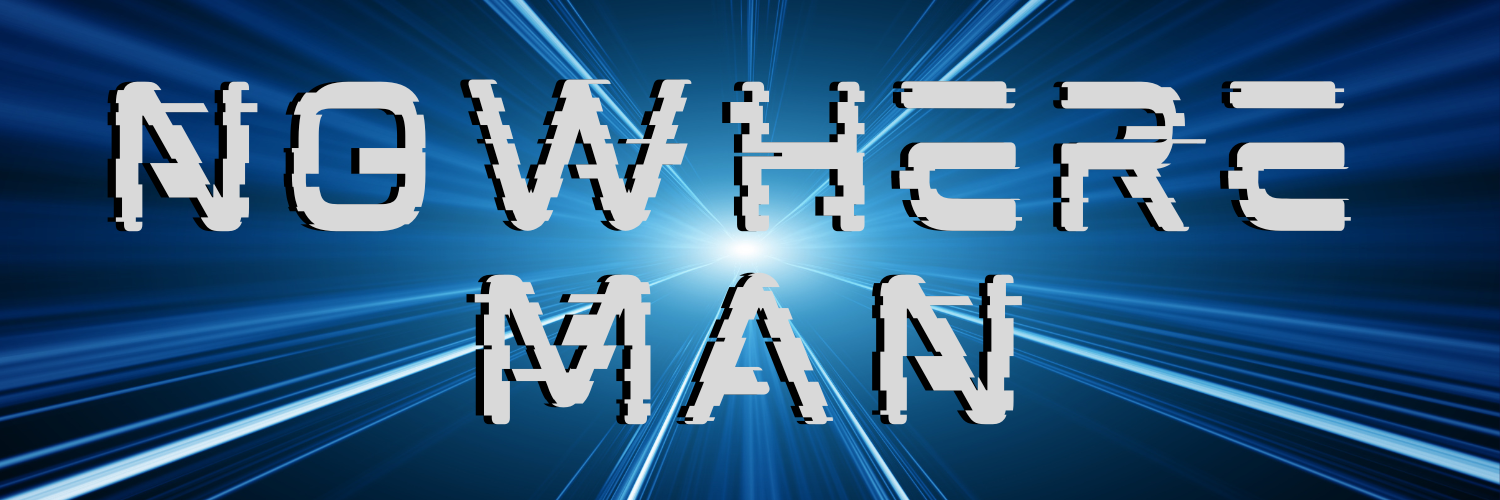

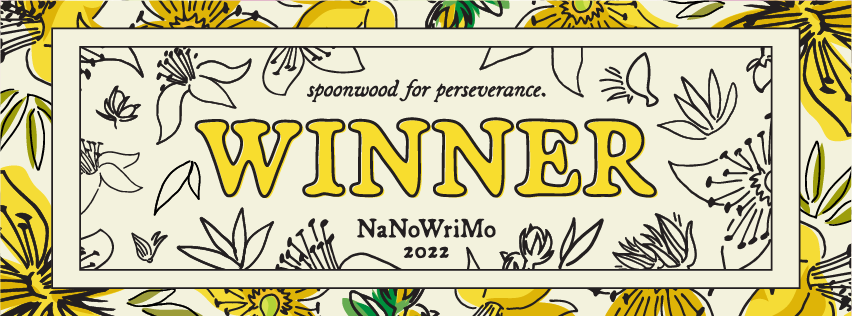
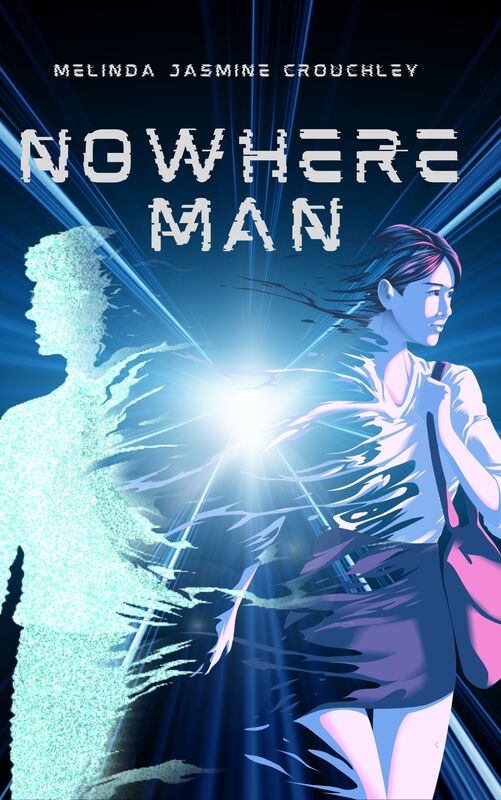
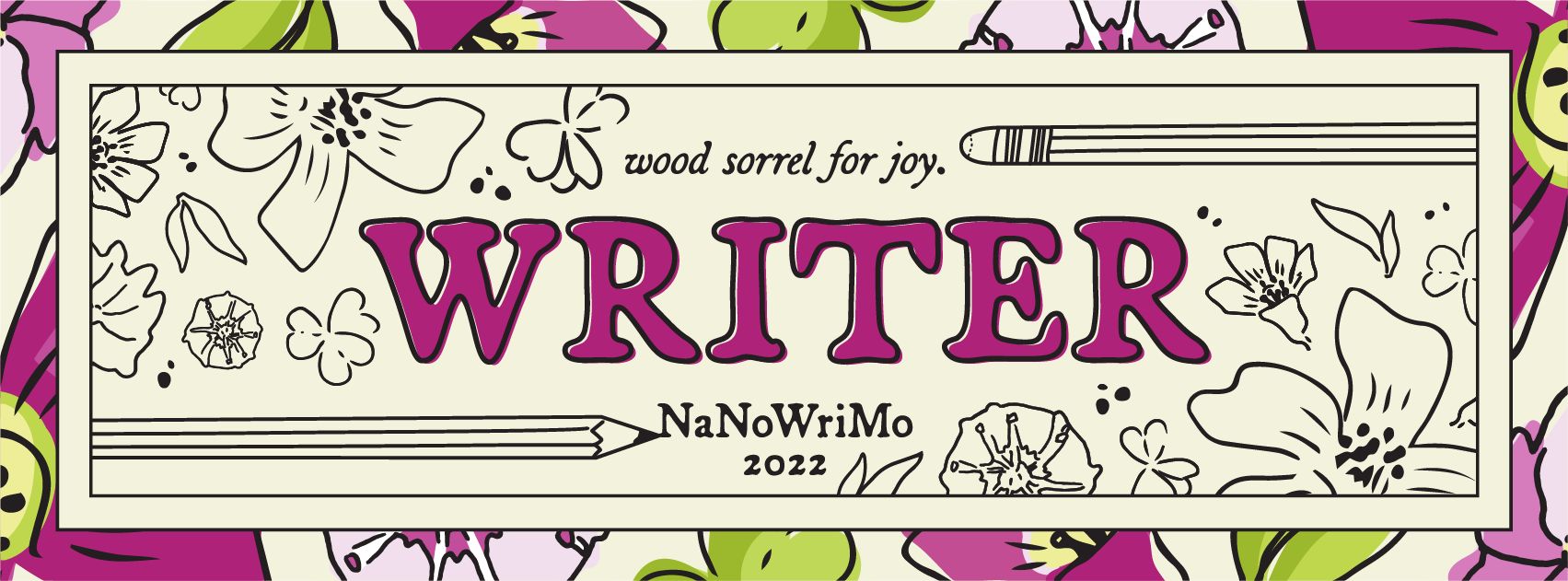
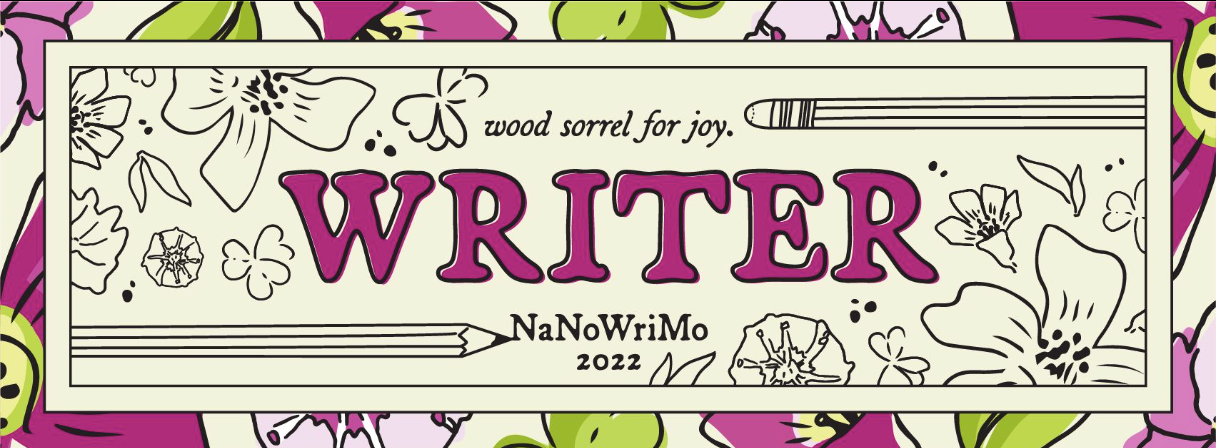
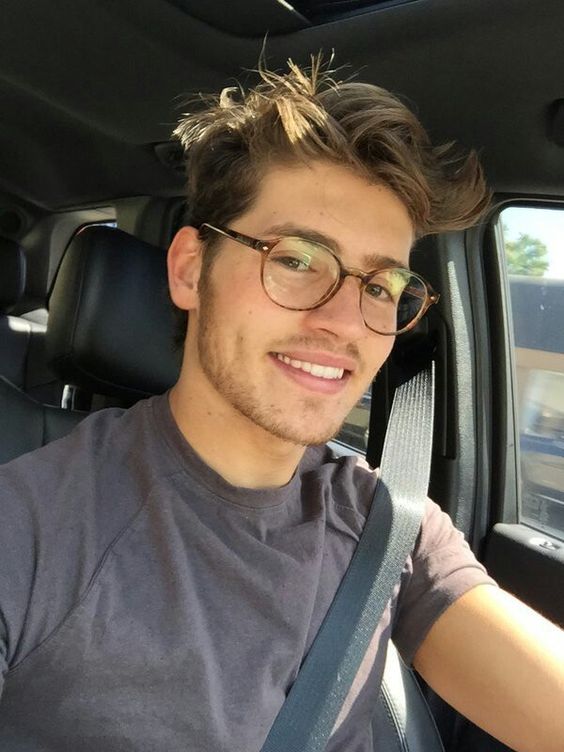


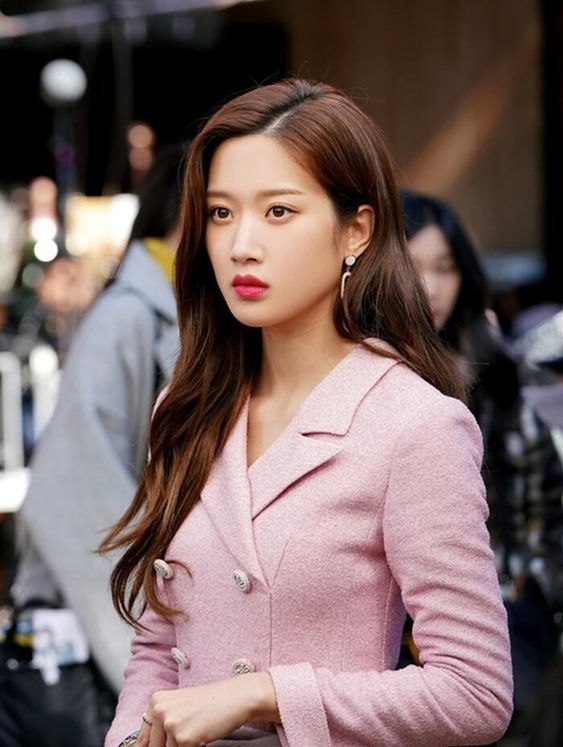


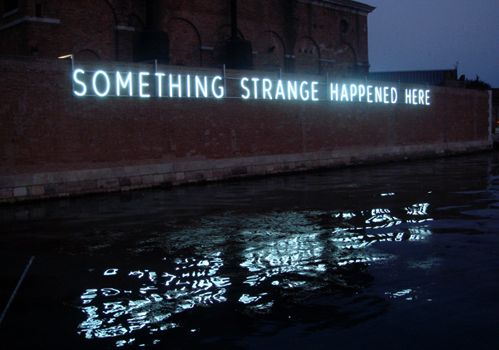
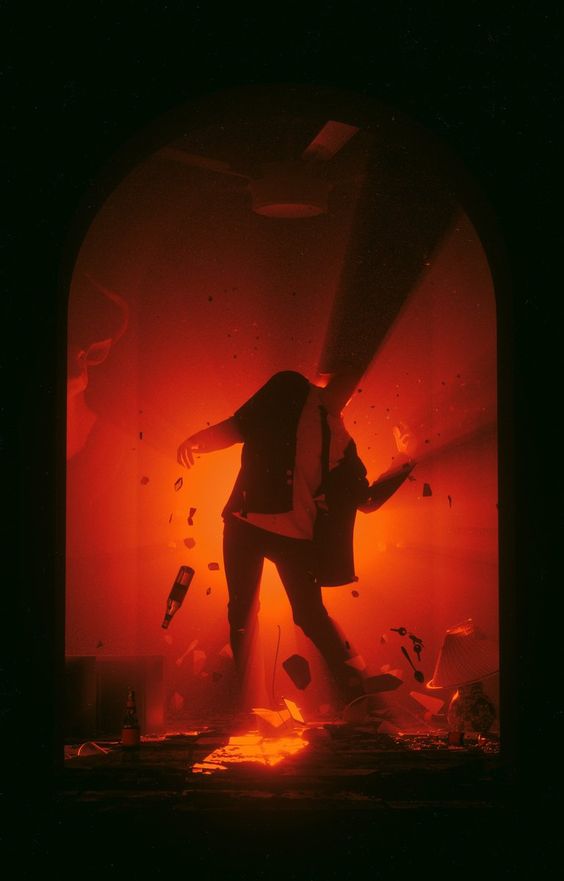



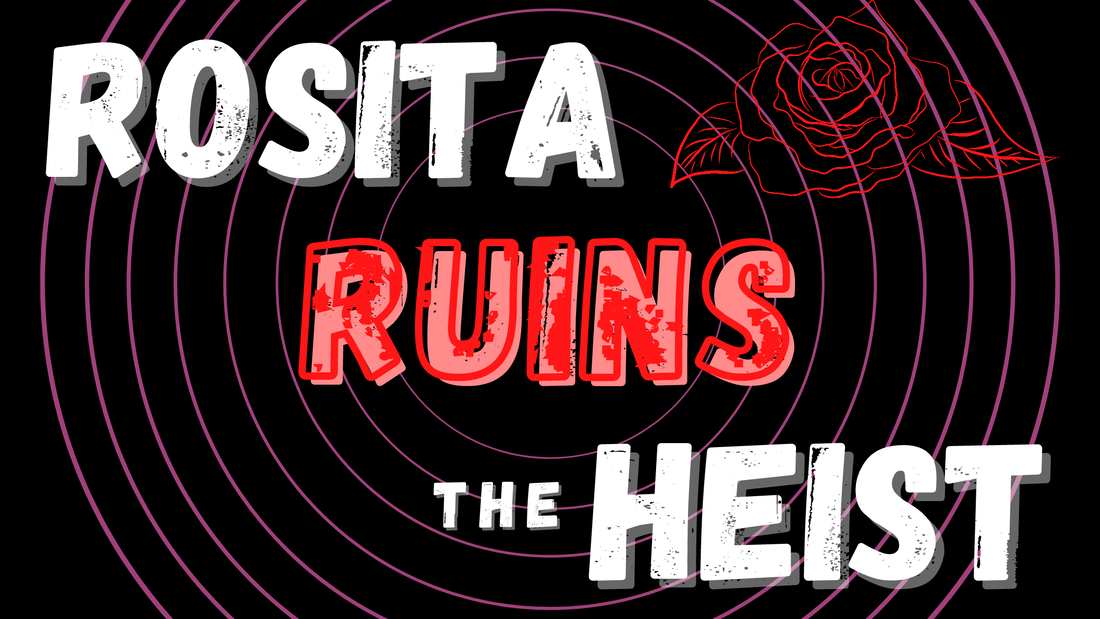
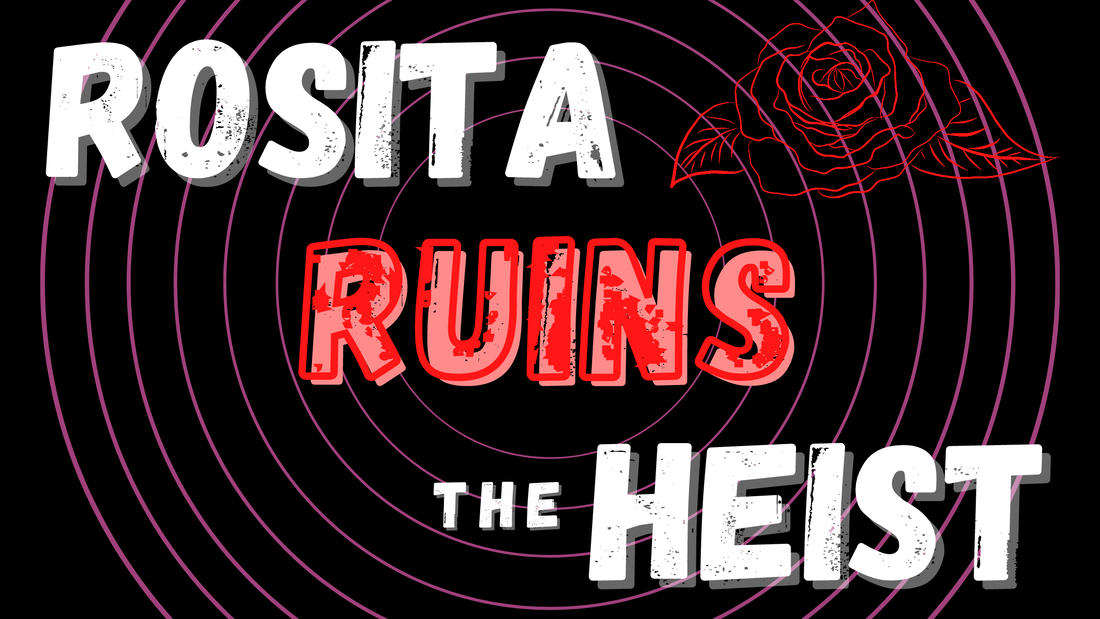
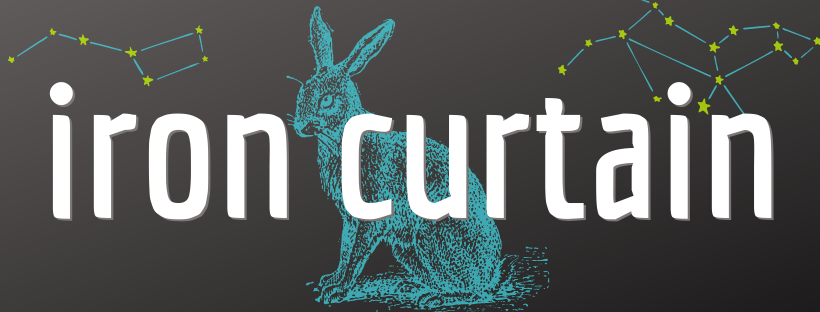
 RSS Feed
RSS Feed
